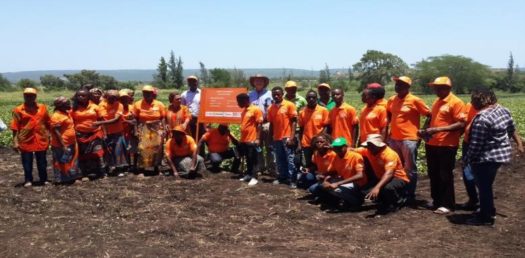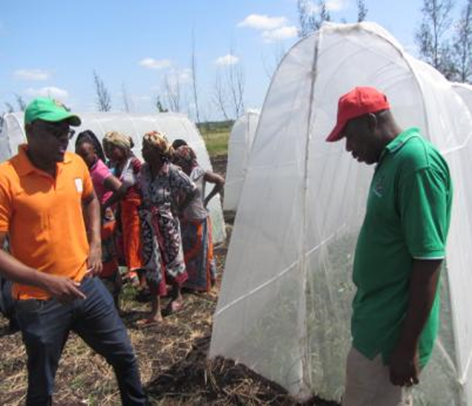On January 08, 2018, 45 participants led by Dr. Maria Isabel Andrade had the opportunity to visit the Nwalate site, in Boane, Mozambique. The site is one of the local primary multiplication centres where seed system activities are conducted. With support from OFDA Mitigating Disaster Project in Southern Mozambique, International Potato Centre (CIP) carried out a field day in the centre. The purpose of the field day was sharing the seed systems technologies with relevant stakeholders and users before the peak of the distribution season.

One of the technologies that is hosted by the site is the net tunnels and conventional plots that currently has 22 varieties available for distribution. Participants got more insight on how the technology works, focusing on the maintenance of clean planting materials and the performance of vines that come from the tissue culture. Net tunnels are important because they protect sweetpotato planting material from getting into contact with pests, which could transmit diseases.

Another interesting part of the field visit was a demo on the production of organic fertilizer/compost using leftover sweetpotato and local vegetation. Participants learnt that they could dig an open pit and fill it with three meters of the remains and letting it decompose so as to use it on the farm. They also had a chance to learn how to produce hay from the vines.
As part of the visit, participants were introduced to the new varieties (15 released in 2011 and 7 in 2018) and had a chance to learn about the pros and cons of each. Then they were invited to tour the fields to observe both vines and storage roots and at this point had a chance to interact with CIP staff discussing breeding of OFSP varieties. One the key discussions during point was on breeding of OFSP varieties and also the process of vine distribution with focus on mass distribution or decentralized vine multiplication (DVM).
A key highlight of the field tour was a demonstration done by CIP staff with samples of different sweetpotato meals. Participants not only got to engage on issues around nutrition of OFS, they also got learn to about the process of production OFSP. Vitamin A deficiency (VAD) is one of the most pernicious forms of undernourishment in the developing world, limiting growth, weakening immunity, affecting sight and increasing mortality. In sub Saharan Africa, CIP has demonstrated that OFSP, when coupled with community nutritional education, provides high levels of vitamin A to vulnerable populations, especially women and young children.
As the field visit came to an end, it was clear that participants were happy with the tour and had gained a lot during the visit. Dr John Grabowisk, from USAID thanked CIP for organizing the tour and everyone who participated. He was particularly impressed by the involvement of all stakeholders in the process from farmers, government, and IIAM.
CIP continues to demonstrate that rigorous research in agriculture and health sciences can be combined to create solutions for global nutrition challenges and that these can be scaled up to reach millions of vulnerable families.